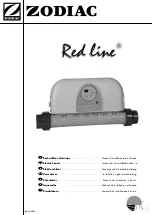
9
■
Has the safety valve (T&P valve) been installed?
■
Has the hot water drain been installed so that any
discharged hot water or steam cannot present a risk
to individuals?
■
Has the hot water drain been installed so that any
discharged hot water or steam cannot damage the
system and materials in or on the building?
■
Has an automatic thermostatic mixing valve for limit-
ing the temperature to 60 °C been installed?
Filling the DHW cylinder on the DHW side
1.
Fill the DHW cylinder on the DHW side.
Note
If the DHW cylinder is pressurised, retighten the
flange cover with a torque of 25 Nm.
2.
Check the fittings on the DHW side and the immer-
sion heater for leaks. If required retighten fittings.
3.
Check the function of the safety valves according
to the manufacturer's instructions.
Filling the DHW cylinder on the solar side
Fig. 4
1.
Remove the closure on the container with heat
transfer medium and replace with the closure sup-
plied.
2.
Make the hose connection between fill valve
B
on
the DHW cylinder and the container with heat
transfer medium.
3.
Position the canister above the DHW cylinder.
4.
Open fill valve
B
.
5.
Vent the following while filling:
■
DHW cylinder at air vent valve
C
■
Collectors at air vent valve
A
Inspection and maintenance
When carrying out maintenance work,
cover
the col-
lector to protect the components from thermal loads.
DIN 1988 requires a visual inspection and (if neces-
sary) cleaning of the DHW cylinder no later than 2
years after commissioning, and thereafter according to
requirements.
Note
We additionally recommend that the function of the
magnesium anode is checked annually. For removing
the magnesium anode, see page 10.
Shutting down the system
Cover the collectors. Switch OFF the immersion heater
and safeguard against reconnection.
Commissioning, inspection, maintenance
Checks
5786 170 GB
Summary of Contents for TS1
Page 23: ...23 5786 170 GB Appendix ...










































